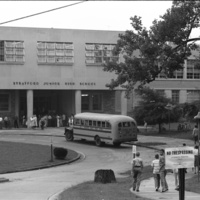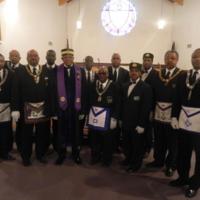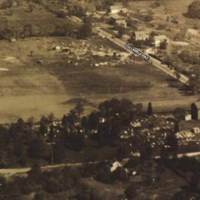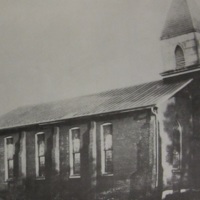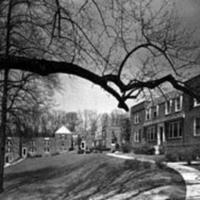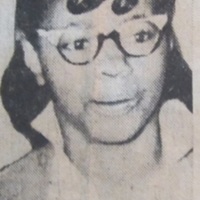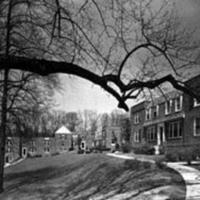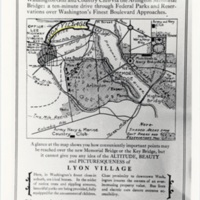Browse Items (79 items total)
In June of 1918 the first rural branch of the NAACP formed in Falls Church with the express goals of working against discrimination and segregation. Support for the NAACP and its causes continued to expand until Arlington County could support a separate dedicated branch in 1940 with 71 members. The branch would continue to grow and soon became one of the largest branches in the state. The organization worked to combat de jure and de facto discrimination, and was particularly active in battling Arlington's school segregation in the courts throughout the 1940s and 1950s. Thanks to this dedication on February 2, 1959 Arlington's Stratford Junior High School, pictured here, became the first school in the state of Virginia to integrate.
Collection: Community Institutions
Arlington's African American Masonic Lodge No. 58 was founded in the Green Valley community in 1888. The institution provided Arlington's growing black community with social, fraternal, and political support. Early members included community leaders Henry Louis Holmes and Edmund C. Fleet. The image above shows current members in the Masonic Lodge at their 2013 sunrise service.
Collection: Community Institutions
This African American fraternal organization was founded in Arlington's Freedman'c Village community in 1870. It served many needs of the newly established and growing black community – hosting social functions, serving as a meeting ground for political functions, serving as a credit union, helping to establish internal community leadership, and supporting black churches and schools. In 1884 the Odd Fellows purchased land in the African American, middle class, Johnson's Hill community to construct the Odd Fellows Steven's Lodge No. 1453. The institutions remained a central part of Arlington's civic-minded African American community through the twentieth century. The Hall was destroyed by fire in 1965.
Collection: Community Institutions
Mt. Olive was founded in 1873 when the Old Bell Baptist Church in Freedman's Village split into two churches. The new congregation built the brick and marble church pictured here in the geographical center of the growing working class black neighborhood of Queen City in eastern Arlington. In July of 1942, just three years after residents constructed a new and expensive church building, Mt. Olive was demolished along with the rest of the Queen City community to make way for the Pentagon's road networks. The church and its congregation relocated yet again, this time to Johnson's Hill.
Collection: Community Institutions
Gustave Ring was a successful developer and builder. In 1935 he began construction of the Colonial Village garden apartment housing complex in Arlington, Virginia (pictured above) with FHA funding. Ring was one of the first builders to work with the FHA. He helped to shape their lending policies and by 1939 he controlled $37 million of the $100 million worth of mortgage insurance provided by the federal institution. Ring's other projects included Arlington Village (1939), the Westchester Apartments (1930) and the Ring Building (1948) in Washington, and other construction around the country.
Collection: Neighborhoods
The League was a loosely organized social and political organization comprised of about twenty of the county's wealthiest and most prominent residents - including William Ball, Crandal Mackey, and Frank Lyon. Many of their aims centered on bringing more municipal improvements to the county, as a part of the broader Southern Progressive Movement. The group famously armed themselves and attacked saloons in Rosslyn on May 30, 1904 in an effort to rid the county of institutions and individuals they deemed undesirable. Here, Mackey stands on the porch of a saloon.
Collection: Community Institutions
Gloria D. Thompson was born in 1946 to parents Clarence and Ethel Thompson. The Thompson family lived in Arlington's African American Hall's Hill neighborhood. Her mother Ethel was involved with the NAACP and added her children to Arlington's school integration cases. On February 2, 1959 twelve-year-old Gloria became one of four black students, and the only female, to integrate Arlington's Stratford Junior High School. She joined fellow Hall's Hill residents Ronald Deskins, Michael Jones, and Lance Newman. Stratford was the first school to integrate in the state of Virginia. After participating in such a major Civil Rights victory, Gloria continued her activism as a member of the Student Nonviolent Coordinating Committee (SNCC).
Collection: Civil Rights
Colonial Village is a garden-style apartment complex created by professional developer Gustave Ring in 1935. It contains more than 200 Colonial Revival red brick buildings surrounded by landscaped paths and lawns.
The development was created to help house the huge number of recently arrived federal employees using funds from the Federal Housing Administration (FHA). The Colonial Village complex was one of the first developments to work with the FHA and Ring helped shape their policies.
The development was created to help house the huge number of recently arrived federal employees using funds from the Federal Housing Administration (FHA). The Colonial Village complex was one of the first developments to work with the FHA and Ring helped shape their policies.
Collection: Neighborhoods
Maywood was founded in 1903 by Arlington Attorney General and developer Crandal Mackey. The community was originally a street-car suburb constructed along the Great Falls and Old Dominion rail line. From its founding to the present many of the community's residents work for the federal government. In 1915 the community was made up of approximately 39 late-Victorian homes by 1915, and by 1965 that number had grown to more than 900 homes.
Collection: Neighborhoods
Lyon Village was founded by local politician, lawyer, and developer Frank Lyon in 1923. Created four years after the opening of his Lyon Park neighborhood, Lyon Village was meant to be an exclusively middle class environment. Lyon Village featured standardized, pre-platted lots, each with 50 foot frontages, with strict building restrictions for the look and size of houses. The community was also segregated for whites only, as these homes contained restrictive covenants that blocked minorities from purchasing within the neighborhood until the mid-twentieth century.
Collection: Neighborhoods
